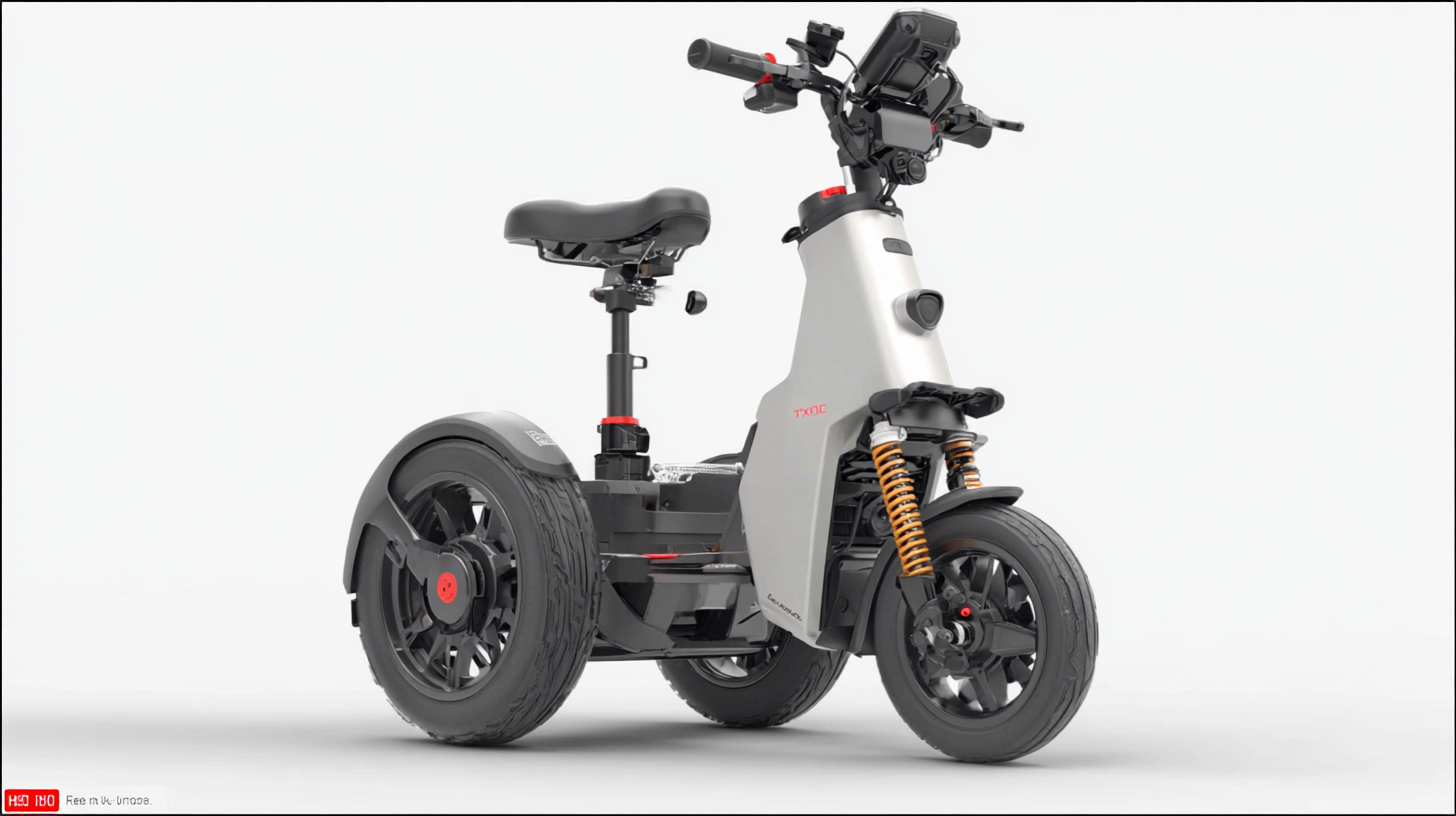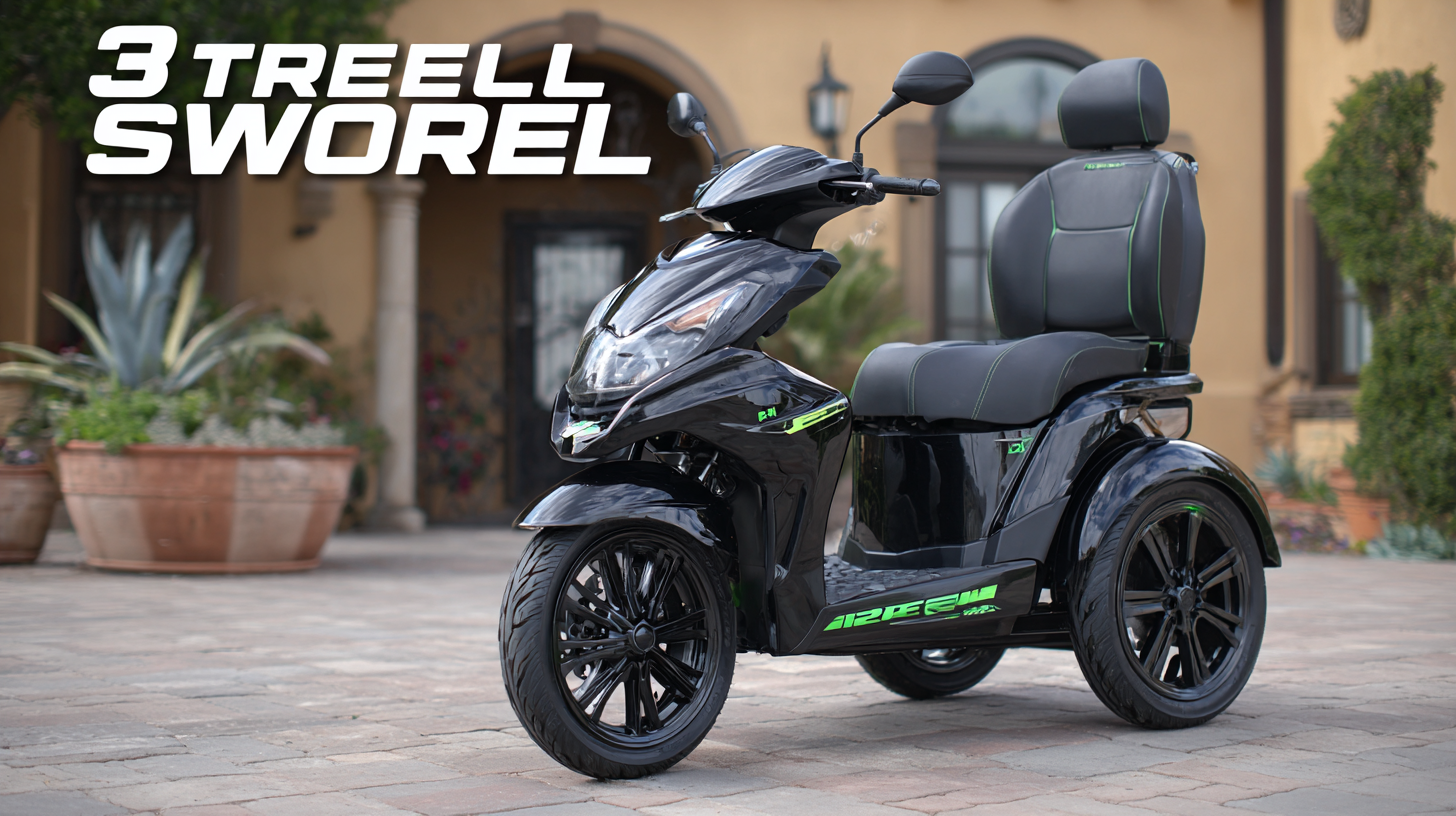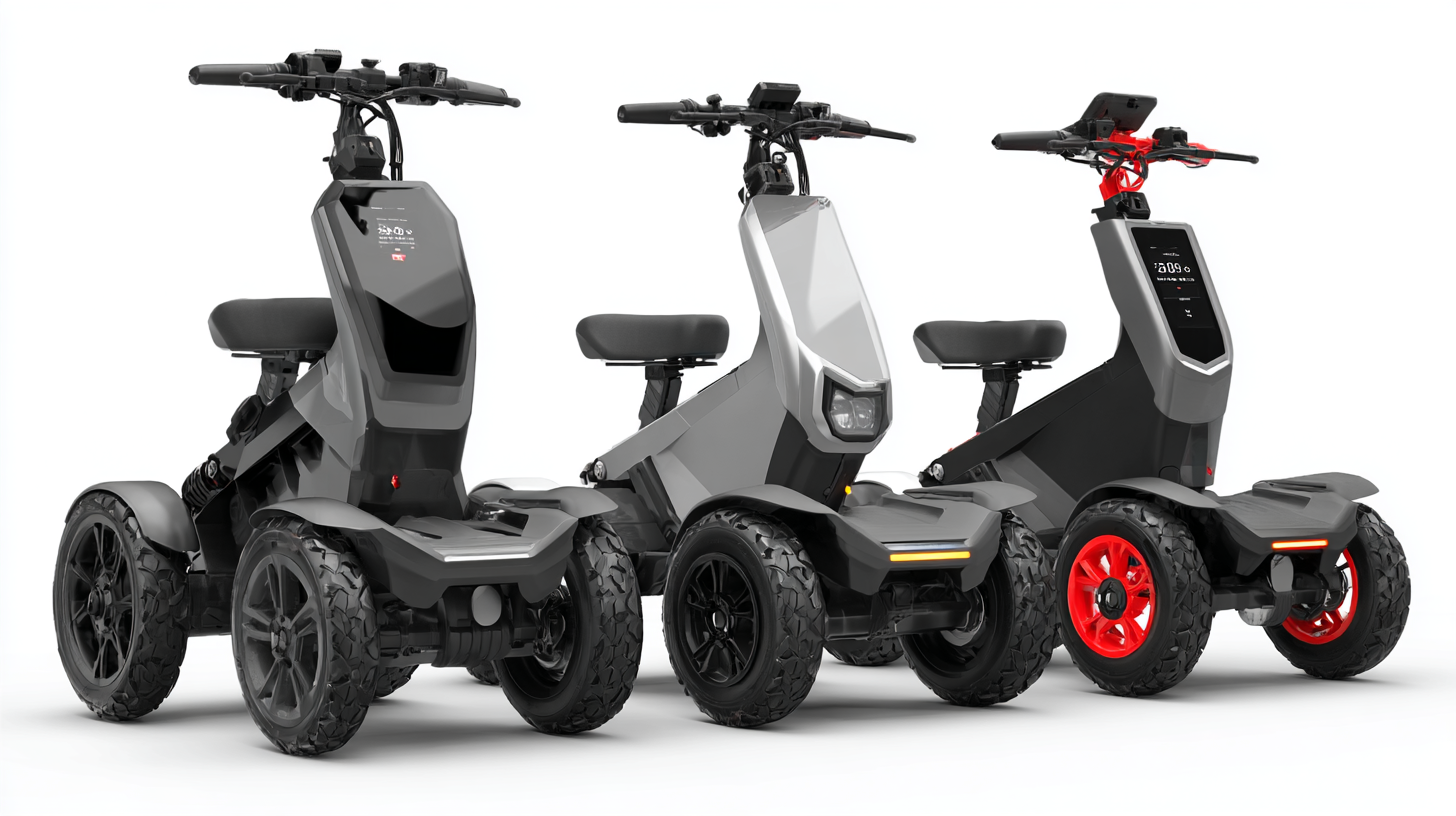In today's fast-paced world, the quest for mobility and independence has led to innovative solutions that cater to various transportation needs. Among these, the 3 Wheel Electric Scooter stands out as a versatile option, combining stability, ease of use, and eco-friendliness. With advances in technology, these scooters have evolved to offer enhanced features that not only ensure rider safety but also provide an enjoyable riding experience. Whether you are a senior seeking assistance for mobility, a commuter looking for a convenient way to navigate urban landscapes, or someone simply wanting to explore the outdoors with greater freedom, a 3 Wheel Electric Scooter is designed to meet your unique requirements.

This blog will explore the distinct characteristics of different types of 3 Wheel Electric Scooters, their specific applications, and a guide on how to choose the best one for your lifestyle.
Three-wheel electric scooters have emerged as a revolutionary option for individuals seeking enhanced mobility, particularly among seniors and those with disabilities. According to a recent report by Research and Markets, the global electric scooter market is projected to grow at a CAGR of 8.5% from 2021 to 2026, reflecting increasing demand for alternative mobility solutions. The stability and ease of use offered by three-wheel designs make them particularly appealing for users who may struggle with balance on traditional two-wheeled models.
One of the standout advantages of three-wheel electric scooters is their superior stability, allowing for safer navigation over various terrains. A study by the National Center for Biotechnology Information indicated that 61% of mobility scooter users reported increased confidence when using a three-wheeled scooter compared to a two-wheeled counterpart. These scooters often feature larger storage spaces and can accommodate additional accessories, further enhancing convenience for users. Additionally, innovations in battery technology are leading to longer ranges, with some models capable of traveling up to 60 miles on a single charge, providing independence for users to run errands or visit friends without the worry of losing power.

The landscape of electric scooters, particularly 3 wheel models, is evolving rapidly, driven by innovative designs that prioritize both safety and user experience. Recent advancements showcase how manufacturers are rethinking traditional scooter designs. For instance, a new model features advanced safety technologies that enhance stability and ease of use, making it ideal for urban commuting. The incorporation of intuitive design elements allows for better rider control, which is essential for navigating busy streets.
Additionally, manufacturers are exploring unique approaches to scooter propulsion, shifting from the conventional kick-push method to more dynamic stances, enabling a more ergonomic riding experience. Innovations such as high-performance motor controllers significantly improve acceleration and responsiveness, setting these 3 wheel electric scooters apart in a crowded market. By focusing on these design innovations, brands are not only enhancing the functionality of scooters but also ensuring that they cater to a wider audience, including those seeking reliable and safe modes of transport.
The rise in popularity of 3 wheel electric scooters can be attributed in large part to their enhanced safety features, which make them an appealing choice for a diverse range of users. According to a report by the National Highway Traffic Safety Administration (NHTSA), three-wheel scooters offer a lower center of gravity, which significantly reduces the risk of tipping over compared to traditional two-wheeled scooters. This stability is particularly advantageous for elderly riders or those with mobility challenges, making it easier to navigate various terrains without the fear of losing balance.

Innovations in safety technology further bolster the appeal of these scooters. Many modern 3 wheel electric scooters are equipped with advanced braking systems and safety harnesses that engage reliably in emergencies. A recent survey by the Electric Scooter Advocacy Group indicated that over 73% of users felt safer riding scooters with features like integrated LED lighting and anti-lock braking systems. These advancements not only enhance rider confidence but also promote responsible riding practices, ultimately contributing to a safer urban mobility environment. As cities continue to expand their infrastructure for electric vehicles, the role of 3 wheel scooters equipped with state-of-the-art safety features is becoming increasingly crucial in ensuring the security and comfort of all riders.
When it comes to performance, speed and range are two critical factors that set three-wheel electric scooters apart in the burgeoning personal mobility market. According to a recent report by the Electric Vehicle Association, the average speed of most three-wheel electric scooters is between 15 to 25 mph, catering to various user preferences and road conditions. For urban commuters, this speed provides a sufficient balance between getting to destinations quickly while also ensuring safety in crowded areas.
Range is another significant aspect that influences consumer choice. Many leading models now boast an impressive range of up to 50 miles on a single charge, which is particularly appealing for those who use their scooters for longer commutes or leisure rides. Industry insights indicate that advancements in battery technology, specifically lithium-ion batteries, have played a pivotal role in enhancing the distance three-wheel scooters can travel. By optimizing energy efficiency and reducing charging times, manufacturers are unlocking the potential for users to enjoy extended journeys without the fear of losing power mid-ride. As the market continues to innovate, it's evident that speed and range will define the next generation of three-wheel electric scooters.
Three-wheel electric scooters are transforming personal mobility across various demographics, providing accessible solutions for individuals with mobility challenges and enhancing urban commuting. A report by Global Market Insights indicates that the electric scooter market is projected to surpass $27 billion by 2027, highlighting a growing demand for alternatives to traditional modes of transport. These scooters offer improved stability and maneuverability compared to their two-wheeled counterparts, making them particularly beneficial for seniors and individuals with disabilities.
Real-world examples of three-wheel electric scooters can be found in several urban environments where they are being integrated into public transport systems. Cities like San Francisco are piloting schemes that allow users to rent these scooters for short trips, effectively reducing congestion and promoting greener travel options. Additionally, organizations such as The Mobility Network have documented case studies of individuals who have regained independence through the use of three-wheel scooters, allowing them to participate more actively in their communities.
As innovation in battery technology progresses, longer ranges and faster charging times are expected, further enhancing the practicality of these vehicles and broadening their appeal.
